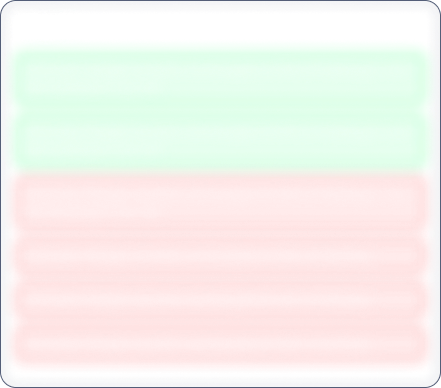Year End Sale 50% off
Jaro Institute of Technol. Mgt. and Research

No Data Available
Investor Sentiment
Jaro Institute of Technol. Mgt. and Research Share price and Fundamental Analysis
Key Metrics
Included In
Stock Returns
Stock Heatmap

No Stocks
Smart Score

Unlock Smart Score
See Detailed Analysis & Insights


Unlock Insights
See Detailed Analysis & Insights
Technicals
Returns Calculator
If you would have investedResearch Report
No Research Report
Corporate Action

No Data Available
Financials
Key Ratios
ROE
Avg ROE (3 Yrs) : NaN%
ROCE
Avg ROCE (3 Yrs) : NaN%
ROA
Avg ROA (3 Yrs) : NaN%
NPM
Avg NPM (3 Yrs) : NaN%
Dividend History
Jaro Institute of Technol. Mgt. and Research Competitors
5 Year FactSheet
Documents

No Data Available
News
Jaro Institute of Technol. Mgt. and Research Management and History
Company Management


Unlock Management Data
See Detailed Analysis & Insights
Company History
Jaro Institute of Technology Management and Research Limited was originally incorporated as a Private Limited Company under the name of 'Jaro Institute of Technology Management and Research Private Limited' on July 9, 2009, issued by the Registrar of Companies, at Mumbai. Thereafter, Company converted into a Public Limited Company and the name was changed to 'Jaro Institute of Technology Management and Research Limited', and a fresh Certificate of Incorporation upon the Conversion was issued by the RoC on August 12, 2017.
Since the establishment of business in 2009 by Sanjay Namdeo Salunkhe, a first-generation entrepreneur with over 17 years of experience in the education sector, the Company has been a pioneer in the online higher education and Learning Management System. At present, it is mainly engaged in facilitating student enrollments and program management services pertaining to the educational courses and degrees offered by the universities/institutes.
Partner Institutions include IITs, IIMs and premier global institutions such as Swiss School of Management and Rotman School of Management, University of Toronto, and top corporates, out of which 24 institutions have earned the distinction of being ranked among the top 100 partners in their respective streams by NIRF. The Company has established a robust learning ecosystem for the Learners, through online LMSs, on-campus and off campus immersive studios, technology training and orientation, dedicated Learner support and personalized career counselling and guidance.
The counselling approach and admission services enable Partner Institutions to focus on the academic content of their courses and programs, instead of facilitating direct admissions. The Partner Institutions are responsible for the academic content of their programs, faculty appointments, providing lectures, determining Learner capacity, granting degrees, and making decisions regarding Learner admission and registration criteria.
Apart from this, the Company interact regularly with Learners to ensure modification in programs based on the participants' feedback. The counselling approach is designed to facilitate course fitment for Learners. Through collaborations with Partner Institutions, it provide practical and industry-relevant skills that have integrated into the curriculum, and educational programs stay updated with real-time industry trends and requirements and are aligned with current market demands, to enhance the employability and marketability of skills of the Learners.
The Company is planning to raise money from public through Initial Offer aggregating upto Rs 570 Crore Equity Shares, comprising a Fresh Issue upto Rs 170 Crore and Rs 400 Crore Equity Shares through Offer for Sale.
Jaro Institute of Technol. Mgt. and Research Share Price
Jaro Institute of Technol. Mgt. and Research share price reflects investor sentiment toward the company and is impacted by various factors such as financial performance, market trends, and economic conditions. Share price is an indicator which shows the current value of the company's shares at which buyers or sellers can transact.
Jaro Institute of Technol. Mgt. and Research Market Cap
Market capitalization of Jaro Institute of Technol. Mgt. and Research indicates the total value of its outstanding shares. Marketcap is calculated by multiplying share price and outstanding shares of the company. It is a helpful metric for assessing the company's size and market Valuation. It also helps investors understand how Jaro Institute of Technol. Mgt. and Research is valued compared to its competitors.
Jaro Institute of Technol. Mgt. and Research PE Ratio
Jaro Institute of Technol. Mgt. and Research PE ratio helps investors understand what is the market value of each stock compared to Jaro Institute of Technol. Mgt. and Research 's earnings. A PE ratio higher than the average industry PE could indicate an overvaluation of the stock, whereas a lower PE compared to the average industry PE could indicate an undervaluation.
Jaro Institute of Technol. Mgt. and Research PEG Ratio
The PEG ratio of Jaro Institute of Technol. Mgt. and Research evaluates its PE ratio in relation to its growth rate. A PEG ratio of 1 indicates a fair value, a PEG ratio of less than 1 indicates undervaluation, and a PEG ratio of more than 1 indicates overvaluation.
Jaro Institute of Technol. Mgt. and Research ROE (Return on Equity)
Return on Equity (ROE) measures how effectively Jaro Institute of Technol. Mgt. and Research generates profit from shareholders' equity. A higher ROE of more than 20% indicates better financial performance in terms of profitability.
Jaro Institute of Technol. Mgt. and Research ROCE (Return on Capital Employed)
Return on Capital Employed (ROCE) evaluates the profitability of Jaro Institute of Technol. Mgt. and Research in relation to its capital employed. In simple terms, ROCE provides insight to investors as to how well the company is utilizing the capital deployed. A high ROCE of more than 20% shows that the business is making profitable use of its capital.
Jaro Institute of Technol. Mgt. and Research Total Debt
Total debt of Jaro Institute of Technol. Mgt. and Research shows how much the company owes to either banks or individual creditors. In simple terms, this is the amount the company has to repay. Total debt can be a very useful metric to show the financial health of the company. Total debt more than equity is considered to be a bad sign.
Jaro Institute of Technol. Mgt. and Research Debt to Equity Ratio
The Debt-to-Equity (DE) ratio of Jaro Institute of Technol. Mgt. and Research compares its total debt to shareholders' equity. A higher Debt to Equity ratio could indicate higher financial risk, while a lower ratio suggests that the company is managing its debt efficiently.
Jaro Institute of Technol. Mgt. and Research CAGR (Compound Annual Growth Rate)
CAGR shows the consistent growth rate of Jaro Institute of Technol. Mgt. and Research over a specific period, whether it is over a month, a year, or 10 years. It is a key metric to evaluate the company’s long-term growth potential. Main metrics for which CAGR is calculated are net sales, net profit, operating profit, and stock returns.
Jaro Institute of Technol. Mgt. and Research Technical Analysis
Technical analysis of Jaro Institute of Technol. Mgt. and Research helps investors get an insight into when they can enter or exit the stock. Key components of Jaro Institute of Technol. Mgt. and Research Technical Analysis include:
Support Levels (S1, S2, S3)
There are usually multiple support levels, but the main support levels for a stock are S1, S2, S3. Support levels indicate price points where stock might get support from buyers, helping the stock stop falling and rise.
Resistance Levels (R1, R2, R3)
There are usually multiple resistance levels, but the main resistance levels for a stock are R1, R2, R3. Resistance levels represent price points where Jaro Institute of Technol. Mgt. and Research shares often struggle to rise above due to selling pressure.
Jaro Institute of Technol. Mgt. and Research Dividends
Dividends refer to the portion of the company’s profits distributed to its shareholders. Dividends are typically paid out in cash and reflect Jaro Institute of Technol. Mgt. and Research ’s financial health and profitability.
Jaro Institute of Technol. Mgt. and Research Bonus Shares
Bonus shares are usually given by companies to make the stock more affordable, increase liquidity, boost investor confidence, and more.
Jaro Institute of Technol. Mgt. and Research Stock Split
Stock split increases the number of its outstanding shares by dividing each existing share into multiple shares. When the company offers a stock split, the face value of the stock reduces in the same proportion as the split ratio.
Jaro Institute of Technol. Mgt. and Research Financials
The financials of Jaro Institute of Technol. Mgt. and Research provide a complete view to investors about its net sales, net profit, operating profits, expenses, and overall financial health. Investors can analyze financial data to assess the company’s stability and also understand how the company has been growing financially.
Jaro Institute of Technol. Mgt. and Research Profit and Loss Statements
The profit and loss statement of Jaro Institute of Technol. Mgt. and Research highlights its net sales, net profit, total expenditure, and operating profits in the current financial year. This Profit and Loss statement is crucial for evaluating the profitability and financial stability of Jaro Institute of Technol. Mgt. and Research .
Jaro Institute of Technol. Mgt. and Research Balance Sheet
The balance sheet presents a snapshot of Jaro Institute of Technol. Mgt. and Research ’s assets, liabilities, and equity of shareholders, providing insights into the financials of the company.
Jaro Institute of Technol. Mgt. and Research Cashflow Statements
Cashflow statements track the company's cash inflows and outflows over a period. It is an essential tool for understanding how well the company manages its liquidity and finances.


